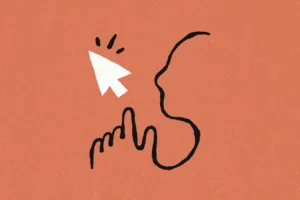As I stand in the bustling hallways of a typical American high school, the air is thick with tension. Students hurry past, their eyes glued to smartphones, unaware that these devices might be conduits for a disturbing new trend: AI-generated sexually explicit images of their peers. This morning, the Center for Democracy and Technology (CDT) released a shocking report that has sent ripples through the education community and beyond.
According to the CDT’s findings, a staggering 15% of high school students reported hearing about AI-generated “deepfake” images depicting someone from their school in a sexually explicit manner during the past academic year. This statistic paints a grim picture of how artificial intelligence, once hailed as a revolutionary technology, is now being weaponized against our youth.
Elizabeth Laird, co-author of the report and director of equity in civic technology at CDT, explains the gravity of the situation: “Generative-AI tools have increased the surface area for students to become victims and for students to become perpetrators.” Her words echo through the school corridors, a stark reminder of the dual-edged nature of technological advancement.
This troubling trend isn’t isolated to a few incidents. In fact, it’s part of a larger, more sinister pattern emerging across the country and beyond.
– Thorn, a nonprofit monitoring child sexual abuse material (CSAM), reported in August that 11% of American children aged 9-17 know a peer who has used AI to generate nude images of other kids.
– A United Nations institute survey found that over 50% of global law enforcement agencies have encountered AI-generated CSAM.
– The Internet Watch Foundation discovered more than 3,500 examples of AI-generated CSAM uploaded to a single dark-web forum in just one month this spring.
David Thiel, a researcher studying AI-generated CSAM at Stanford, provides a chilling estimate: “There are likely thousands of new [CSAM] images being generated a day.” The scale of this problem is unprecedented, leaving educators, law enforcement, and tech companies scrambling for solutions.
Sophie Maddocks, director of research and outreach at the Center for Media at Risk at the University of Pennsylvania, describes the current situation as a “perfect storm.” The convergence of social media platforms, encrypted messaging apps, and easily accessible AI image generators has created an environment ripe for abuse.
“We’re seeing a general kind of extreme, exponential explosion of AI-generated sexual abuse imagery,” Maddocks warns. Her words hang heavy in the air, a testament to the urgency of the situation.
As I speak with tech experts in their offices, surrounded by screens displaying complex algorithms, the enormity of the challenge becomes clear. Traditional methods of detecting CSAM, such as using hash databases, are easily circumvented by AI-generated content.
Rebecca Portnoff, head of data science at Thorn, explains the dilemma: “Even if law-enforcement agencies could add 5,000 instances of AI-generated CSAM to the list each day, 5,000 new ones would exist the next.” The cat-and-mouse game between abusers and protectors has reached a new level of complexity.

Schools Unprepared for the AI CSAM Crisis
Back in the school, the lack of preparedness is palpable. CDT’s survey reveals a disturbing lack of awareness and action:
– Less than 20% of high school students said their school had explained what deepfake NCII (non-consensual intimate imagery) is.
– Even fewer students reported that their school had explained the harm of sharing such images or where to report them.
– A majority of parents said their child’s school provided no guidance on authentic or AI-generated NCII.
– Among teachers aware of sexually abusive deepfake incidents, less than 40% reported that their school had updated its sexual harassment policies to include synthetic images.
Laird emphasizes the critical role of schools in addressing this issue: “This cuts to the core of what schools are intended to do, which is to create a safe place for all students to learn and thrive.”
A Call to Action
Despite the grim outlook, experts remain cautiously optimistic. Portnoff sees a “window of opportunity” to address the crisis, but warns, “We have to grab it before we miss it.
Recent developments offer a glimmer of hope:
– Major AI companies, including OpenAI, Google, Meta, and Microsoft, have agreed to voluntary design principles to prevent their products from generating CSAM.
– The White House has issued calls to action and announced voluntary commitments from tech companies to combat synthetic CSAM.
However, as Alexandra Givens, president and CEO of CDT, points out, “There are no silver bullets in this space, and to be effective, you are really going to need to have layered interventions across the entire life cycle of AI.”
As the school day ends and students file out, their faces illuminated by smartphone screens, the urgency of addressing this crisis is clear. The rise of AI-generated child sexual abuse imagery is not just a technological problem but a societal one that requires a coordinated response from tech companies, schools, law enforcement, and policymakers.
The battle against AI-generated CSAM is far from over, but with increased awareness, technological innovation, and a commitment to protecting our youth, there’s hope that we can turn the tide. As I leave the school grounds, the weight of this challenge hangs heavy, but so does the determination to find a solution.
















Add Comment